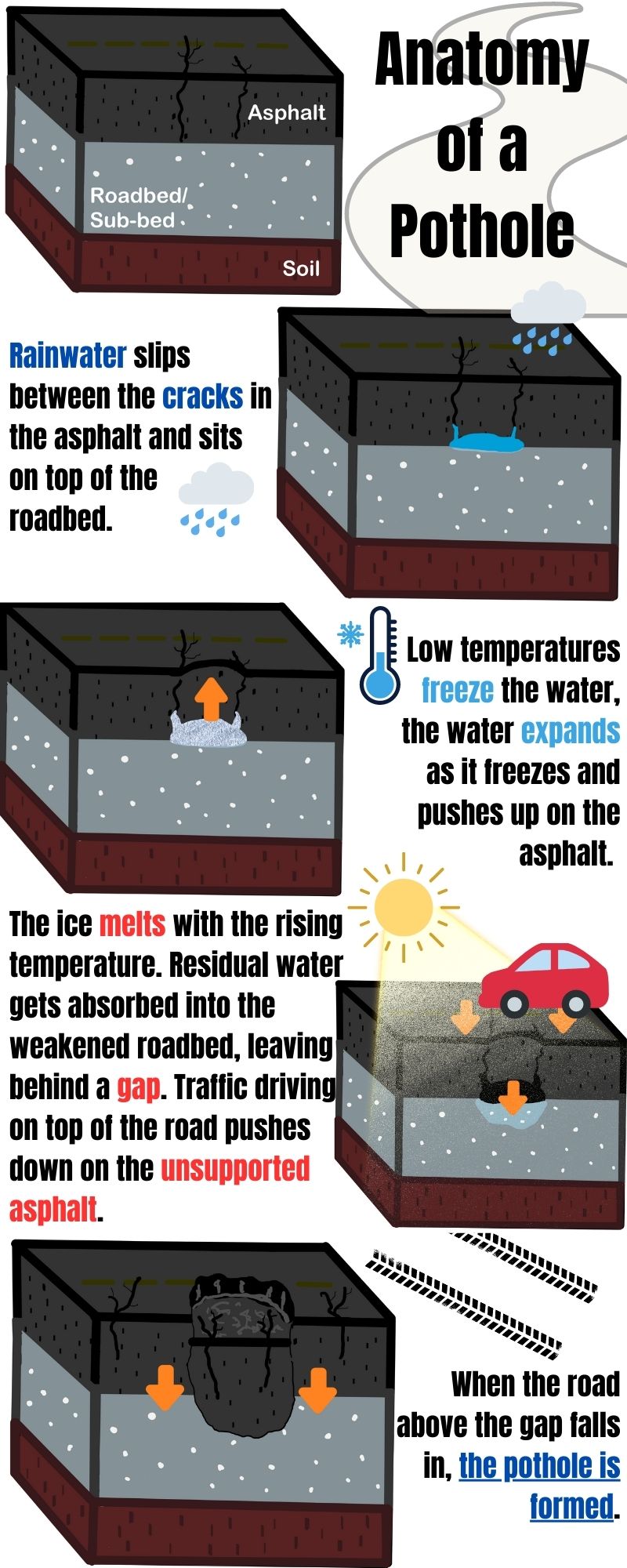The Question:
It’s that time of year when there are potholes everywhere. I wonder what is the anatomy of a pothole? How are potholes formed? – From Rebecca Dodge
The Answer:
Springtime means warmer days, melting snow, shorebird migrations, and potholes. For some people, potholes are the bane of their existence. They pop up everywhere, and when one gets filled, three more take its place. You may also be wondering how these pesky things form, how they are so good at multiplying, and why they are so prevalent in the spring. Potholes are not hard to create. In fact, anywhere cold, like Alaska, is the perfect breeding ground for them. The ground beneath the road is made up of layers. The top layer is asphalt, underneath is the roadbed or subbed, then the soil. Cracks in the asphalt of the road allow for water to get underneath the asphalt. The water sits on top of the roadbed, just under the asphalt. In the wintertime, when temperatures drop below freezing, the water freezes and expands, pushing up on the asphalt. When the temperature rises and the water melts, there is a weak spot left behind. The constant motion of cars driving over that weak spot causes the road to slowly chip away, piece by piece. The recurrence of a freeze-thaw, freeze-thaw escalates the process. Eventually, all you are left with is a hole in the ground, a pothole.

Cristina Reo is an education specialist at the Prince William Sound Science Center. We are currently seeking more questions from the community. Got a question about something you saw in the Sound? Want a scientific paper translated into plain English? Need help settling a scientific debate with a friend? If you have a scientific related question, please email it to creo@pwssc.org.





